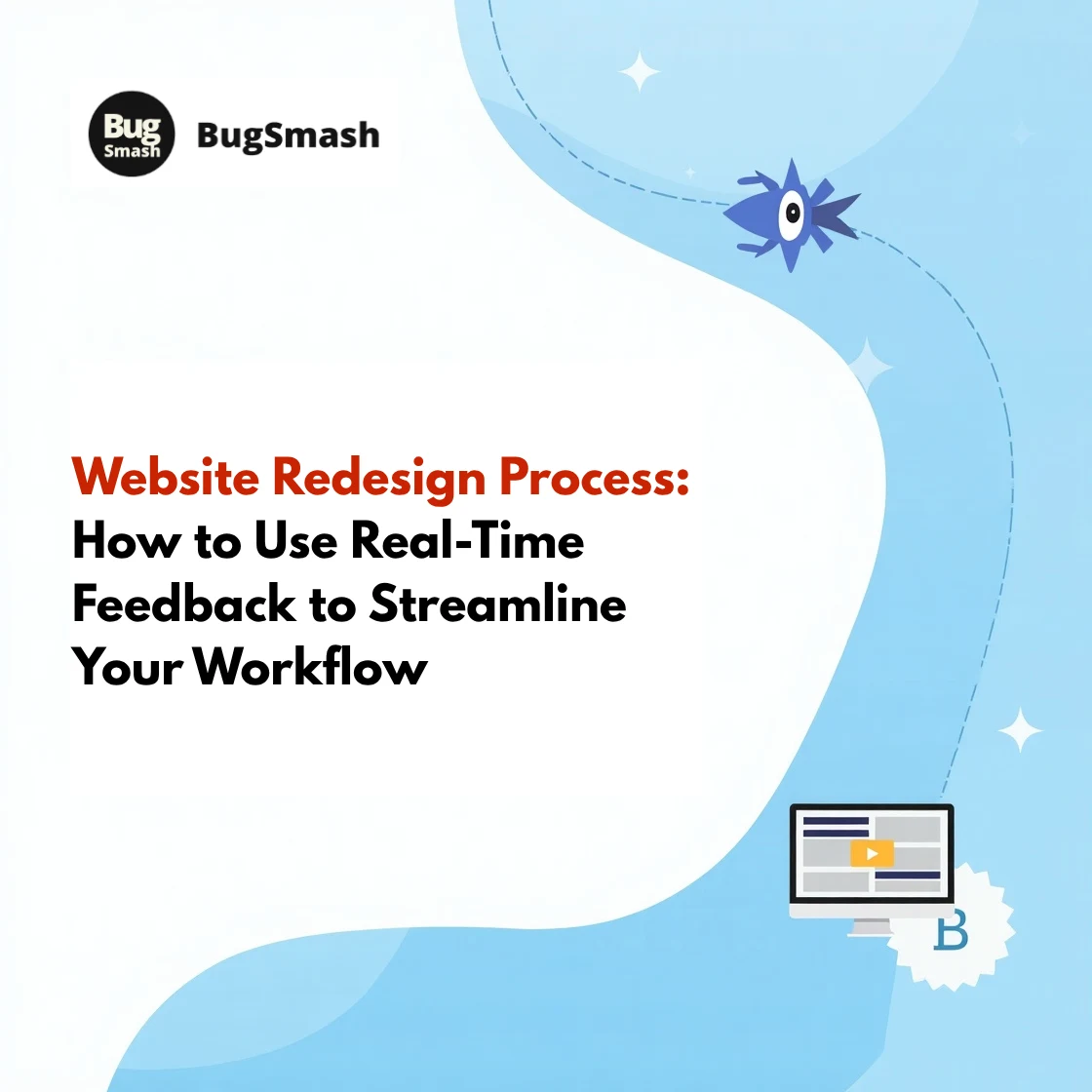Redesigning your website isn’t just about aesthetics — it’s about creating a faster, smoother, and more impactful user experience. Yet, the website redesign process can quickly spiral into endless revisions, missed goals, and delayed launches without a clear feedback loop. That’s where real-time feedback and the right website feedback tool become game-changers.
In this blog, we’ll break down how integrating real-time feedback into your redesign process — powered by the right feedback tool — improves collaboration, shortens timelines, and leads to better outcomes without the back-and-forth chaos.
Why Most Website Redesign Processes Break Down
Redesign projects often suffer from:
- Miscommunication between teams
- Feedback delays
- Subjective input overruling data-driven insights
- Scope creep from endless changes
This doesn’t just burn time — it leads to poor UX decisions, increased costs, and frustrated stakeholders.
To avoid this, you need a streamlined redesign workflow powered by real-time feedback. Let’s dive into how that works.
What Is Real-Time Feedback in Web Design?
Real-time feedback means collecting input instantly, often through tools that allow teams, stakeholders, and users to leave comments directly on your designs, wireframes, or staging sites.
Instead of relying on scattered emails or long feedback meetings, these tools consolidate feedback in one place — while you’re actively working on the design.
Benefits of Using Real-Time Feedback in Your Website Redesign Process
Here’s what you gain by integrating live feedback loops:
🔄 Faster Iteration
- Designers can act on feedback immediately
- Developers avoid last-minute fixes
- Clients stay in the loop and sign off quicker
✅ Clearer Communication
- No confusion about what needs to change
- Context-rich comments make feedback actionable
- Reduces back-and-forth and delays
👥 Better Collaboration
- Cross-functional teams stay aligned
- Marketing, design, dev, and stakeholders see the same version
- Everyone works toward a shared goal
🎯 Improved Design Accuracy
- Decisions are based on direct, relevant feedback
- Reduces assumptions and guesswork
Key Stages in the Website Redesign Process (with Real-Time Feedback)
Here’s how to integrate real-time feedback throughout each stage:
| Stage | Objective | Feedback Approach |
|---|---|---|
| 1. Discovery & Audit | Identify pain points and set goals | Get team and user input on current UX issues |
| 2. Wireframing | Visualize layout and flow | Use real-time annotations for quick layout changes |
| 3. Design | Define UI and brand aesthetics | Invite stakeholders to comment on style and messaging |
| 4. Development | Build the live site | Let QA teams flag issues directly on staging URLs |
| 5. Testing & Launch | Final polish before going live | Collect final feedback from users and teams |
| 6. Post-Launch Review | Monitor performance and make updates | Use ongoing feedback to continuously optimize |
Tools That Make Real-Time Feedback Easy
Here are some popular tools that help teams implement real-time feedback during redesign:
- BugSmash – Clean interface for contextual feedback across teams
- Figma – Built-in comment threads on designs
- InVision – Prototype previews with collaborative review
- Userback – Allows clients and testers to leave visual feedback on live pages
- Loom – Video feedback for asynchronous design reviews
How to Set Up a Real-Time Feedback System for Redesigns
Follow these steps to make real-time feedback a core part of your workflow:
1. Choose a Feedback Tool
Pick a tool that integrates with your design or development platform. Make sure it supports:
- Commenting directly on visuals or URLs
- Tagging team members
- Version tracking
2. Define Roles & Access
Who gives feedback? When? Limit feedback to relevant team members at each stage to avoid noise.
3. Set Deadlines for Responses
Create a shared calendar with response windows to avoid feedback delays.
4. Act on Feedback Quickly
Assign comments as tasks. Don’t let them sit untouched.
Common Mistakes to Avoid
Real-time feedback is powerful — but only when used right. Watch out for these traps:
- Feedback overload: Avoid asking too many people for input at once.
- Vague comments: Encourage specific, actionable feedback.
- No prioritization: Not all feedback deserves equal weight. Use tags or statuses.
- No follow-through: Always act on or acknowledge feedback to build trust.
FAQs About the Website Redesign Process & Feedback
How long should a website redesign take?
A typical redesign takes 2–6 months depending on scope. Real-time feedback can cut that timeline by 20–30%.
What’s the best way to collect feedback from non-technical stakeholders?
Use tools with visual comment features (like BugSmash or Userback) — they don’t require any coding knowledge.
Can real-time feedback replace user testing?
No. Feedback tools help internal collaboration, but user testing gives unbiased external insights. Use both.
Is real-time feedback necessary for small websites?
Yes. Even for small sites, it saves time and prevents misalignment between teams or clients.
Conclusion: Rethink How You Redesign
The website redesign process doesn’t have to be messy, chaotic, or endlessly delayed. By embedding real-time feedback into your workflow — especially during early stages like gathering feedback on website mockups — you create a more collaborative, agile, and effective process. No more bottlenecks or endless revision cycles.
If you want fewer meetings, faster launches, and a smoother approval process, make real-time feedback your default — not an afterthought.
👉 Explore our pricing plans and streamline your redesign today




